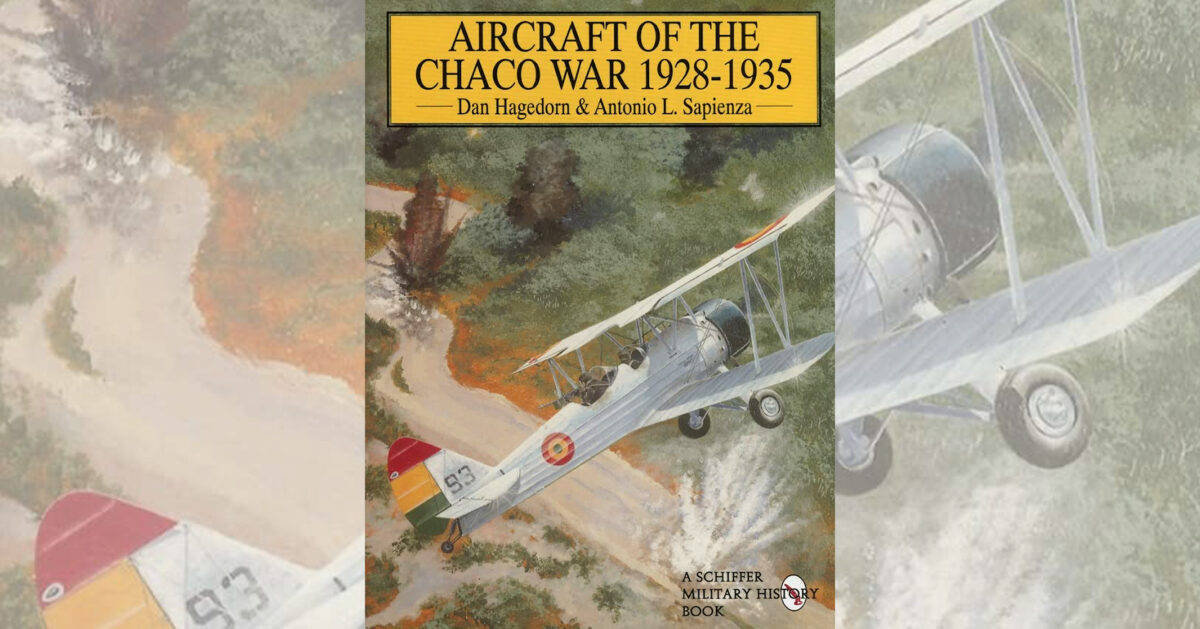Aircraft of the Chaco War 1928-1935, by Dan Hagedorn and Antonio L. Sapienza, Schiffer Publishing, Ltd., Atglen, Pa., 1997, $45.
After the Sino-Japanese “incident” and the Spanish Civil War, the most notable conflict of the 1930s in which aircraft played a significant role was the struggle between Bolivia and Paraguay for a 100,000-square-mile area of low-lying wilderness called the Chaco Boreal, or Gran Chaco. Although Bolivia fielded no more than 62 combat aircraft and 22 trainers against a Paraguayan total of 32 warplanes and 23 trainers, the Chaco War saw considerable aerial activity and several instances of air-to-air combat.
Equally dramatic in its own way were the goings-on behind the scenes, as adventuresome contractors, representing aircraft manufacturers from several countries, vied to sell their planes to the warring sides. For companies that got their aircraft into front-line service, glowing reports, like those made by Bolivian pilots about their Curtiss Hawk II fighter-bombers or Curtiss-Wright C14R Ospreys, served as valuable publicity.
Combining the research of American aviation historian Dan Hagedorn and Paraguayan expert Antonio Luis Sapienza Fracchia, Aircraft of the Chaco War 19281935 is the story of a dazzling international collection of warplanes from the golden age of aviation, put through their combat paces in a relatively neglected setting. After establishing the background of the conflict, the authors cover each aircraft type in turn, with fascinating details about how they came to be used by either Bolivia or Paraguay and how they performed in action.
Some of the featured planes are familiar to most Americans–the Curtiss-Wright “Bolivian Osprey,” the Curtiss Cyclone Falcon and the Junkers Ju-52/3m. But there is also a fascinating collection of oddities like the ungainly looking but surprisingly successful Vickers 143 “Bolivian Scout” from Britain or the more advanced-looking French-built Wibault 73C.1, which proved to be a disappointment to the Paraguayans.
A handful of aircraft distinguished themselves, most remarkably Paraguay’s already obsolescent French Potez 25.A.2 reconnaissance bomber, destined to be the only aircraft type to serve throughout the war from start to finish. Most of the aircraft mentioned, however, only made their way into the opposing air arms in small numbers, such as Paraguay’s two Italian-made Macchi M.18A.R flying boats or the single Consolidated 21-C that served Bolivia as a high-speed courier and communications plane.
The exploits of noteworthy pilots of both sides are cited in relation to the aircraft they flew. A separate chapter is devoted to the equally fascinating stories of would-be contracts that failed to materialize, such as the Swiss-built Comte A.C.3 bomber transport and the Curtiss BT-32 Condor Bomber, neither of which got into Bolivian service as planned.
Profusely illustrated with a multitude of photographs, including numerous front-line pictures, many of which have never been published before, Aircraft of the Chaco War is highly recommended for aviation enthusiasts and modelers alike. In particular, it should give a new lease on life to any jaded buff of the Golden Age who thinks he has seen everything.





